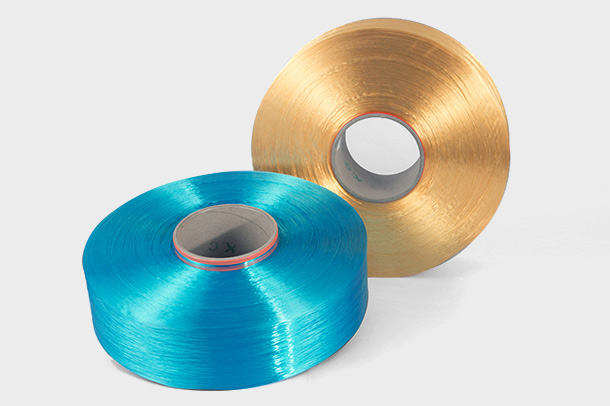Abstract:The organizational structure of polyester
chemical structure
The basic composition of polyester is polyethylene terephth...
chemical structure
The basic composition of polyester is polyethylene terephthalate, molecular formula HO-H2C-H2C-O[-OC-Ph-COOCH2CH2O-]n, because there are a lot of ester groups on the molecular chain, it is called polyester fiber (PET). ), the chemical structural formula of its long-chain molecule is H(OCH2CCOCO)NOCH2CH2OH, the relative molecular weight of polyester used for fiber is generally around 18000~25000, the molecular weight of wool-like polyester is lower, and the molecular weight of industrial polyester is higher. In fact, there are also small amounts of monomers and oligomers present. These oligomers have a low degree of polymerization and exist in a cyclic form. Polyethylene terephthalate can be obtained by polycondensation of terephthalic acid (PTA) and ethylene glycol (EG) by direct esterification to obtain ethylene terephthalate (9BHET).
From the perspective of molecular composition of polyester, it is composed of short aliphatic hydrocarbon chains, ester groups, benzene rings, and terminal alcohol hydroxyl groups. In addition to the existence of two terminal alcohol hydroxyl groups, there are no other polar groups in the polyester fiber, so the hydrophilicity of polyester fiber is extremely poor. The polyester molecule contains about 46% ester groups. The ester group can be hydrolyzed and pyrolyzed when the temperature is above 200 °C. When it encounters strong alkali, it will be saponified, which will reduce the degree of polymerization. Influence; the polyester molecule also contains aliphatic hydrocarbon chains, which can make the polyester molecule have a certain flexibility, but because there are benzene rings that cannot rotate internally in the polyester molecule, the polyester macromolecule is basically a rigid molecule, and the molecular chain is easy to maintain. line type. Therefore, polyester macromolecules are easy to form crystals under this condition, so the crystallinity and orientation of polyester are high.
physical structure
The morphological structure observed in the microscope of polyester produced by melt spinning has a circular cross-section and no special longitudinal structure. Filamentous fibrillar tissue can be observed under an electron microscope.
The special-shaped fiber can change the elasticity of the fiber, make the fiber have special luster and bulkiness, and improve the cohesion and covering ability of the fiber, as well as anti-pilling, reducing static electricity and other properties. For example, the triangular fiber has a flash effect; the pentalobal fiber has a luster like fat, good hand feeling, and anti-pilling; the hollow fiber has a cavity inside, low density, and good heat retention.
Aggregate structure
The thickness of the polyester folded chain lamellae measured by electron diffraction is about 10NM, while the length of the polyester single base is 1.075NM. Therefore, the thickness of the lamellae can be considered to be equivalent to the length of the single base of 9 polyester molecules. However, the polyester macromolecular chain length is about 1.075*130 (average degree of polymerization) = 140NM, which shows that the polyester platelet macromolecular chain must take a folded chain structure. Folding may occur at the -CH2-CH2- segment, the reason is that the chain here is more flexible and easy to bend.
In addition, because polyester macromolecules can also form extended chain crystals (fibrillated crystals). It can be seen that folded chain crystals and fibril crystals coexist in polyester. These two crystallization ratios vary with the stretching ratio and heat setting conditions.

